Electron Transport/Oxidative Phosphorylation Biochem
1/16
There's no tags or description
Looks like no tags are added yet.
Name | Mastery | Learn | Test | Matching | Spaced |
|---|
No study sessions yet.
17 Terms
Electron Transport and Oxidative Phosphorylation Definition
The electron transport/oxidative phosphorylation pathway consists of a chain of enzymes and other molecules that results in a high yield of ATP molecules (metabolic energy).
In eukaryotic cells, these processes take place in mitochondria, as does the TCA cycle.
The electron transport/oxidative phosphorylation proteins are integral membrane proteins of the inner mitochondrial membrane.
During electron transport, a proton gradient is established across the inner mitochondrial membrane.
During oxidative phosphorylation, the movement of protons through the ATP synthase enzyme in the inner mitochondrial membrane leads to the synthesis of ATP molecules.
Overview of the TCA Cycle and its Linkage to the Electron Transport/Oxidative Phosphorylation Pathway
NADH produced by TCA cycle in matrix, binds to complex I, donates H+/2e-.
Release of H+/2e- stimulates complexes to function.
I, III, IV function as proton transporters to intermembrane space to form proton gradient.
Protons move from gradient back through ATP synthase to stimulate production of ATP.

Electron Transport Reactions
O2 from lungs, production of H2O stimulates complex IV.
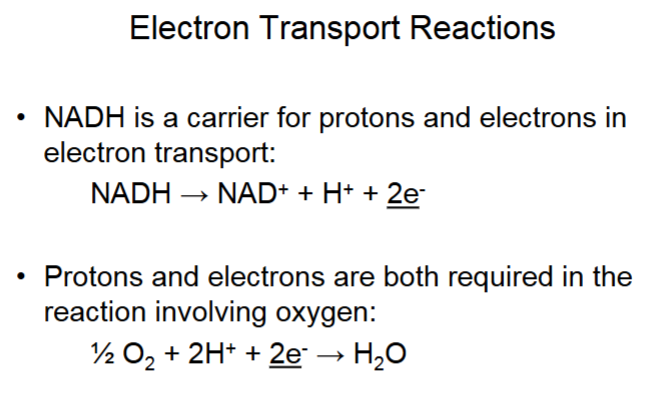
NAD+ (Nicotinamide Adenine Dinucleotide)
Nicotinamide is the amide derivative of niacin (B-vitamin derivative). Sole function of molecule is proton/electron transport.

Mitochondria: The Location of the Enzymes of the TCA Cycle and Electron Transport/Oxidative Phosphorylation
Cells have 1000-2000 mitochondria.
High degree of folding in the inner membrane gives lots of surface area for the protein complexes.
Matrix divided up because of inner folding.
Intermembrane space hosts H+ gradient, which flows into ATP synthase.
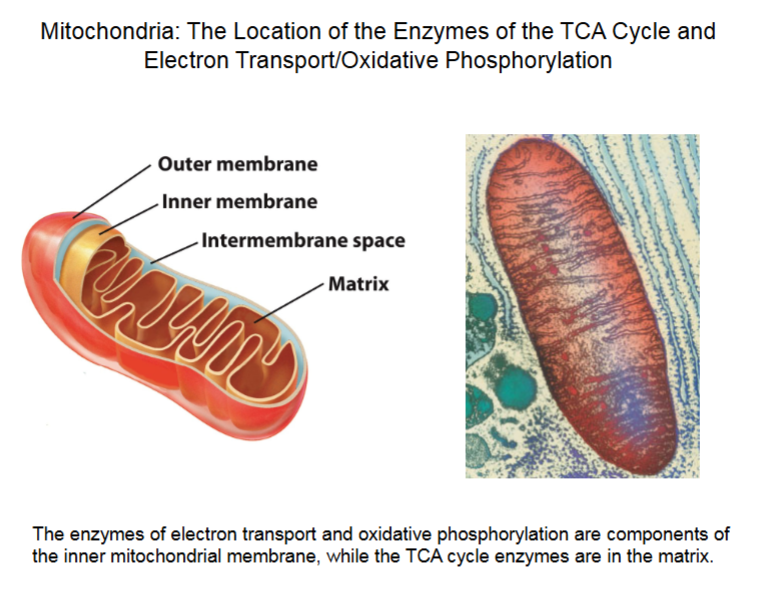
Enzyme Complexes of the Electron Transport Chain
Coenzyme Q (UQ) is a terpene lipid in the hydrophobic lipid bilayer.
Circulates H+/e- from I → III and II → III.
Cytochrome c (cytc) is a globular protein in intermembrane space.
Moves between III and IV, transporting H+/e-.
Reduced (binding e-), oxidized (no e-)
Complex II gets H+ from FADH2, which contains the succinate→fumarate enzyme. Donates H+ to III via cytochrome c.
IV produces H2O to stimulate itself.
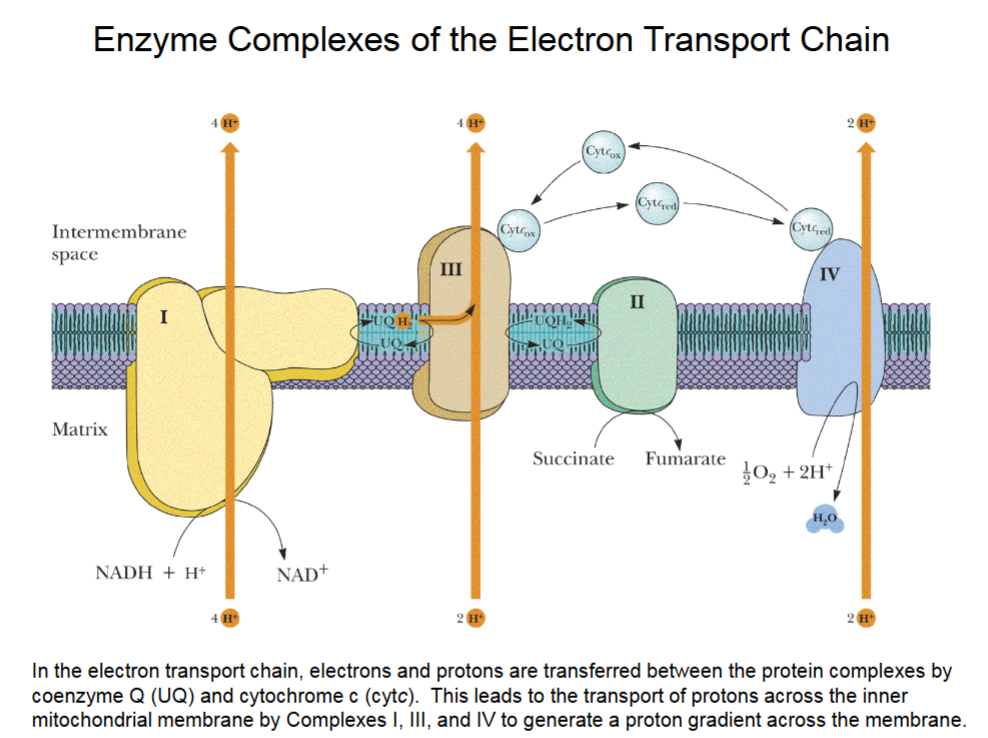
Proton and Electron Transport
Protons are transported from the mitochondrial matrix to the intermembrane space by Complexes I, III, and IV.
The transport of electrons and protons between the protein complexes is brought about by:
(a) Coenzyme Q (CoQ or UQ [ubiquinone])
Cytochrome c (Cytc)
Protein Complexes of the Electron Transport Chain
Complex I: NADH-coenzyme Q reductase
Complex II: Succinate-coenzyme Q reductase
Complex III: Coenzyme Q-cytochrome c reductase
Complex IV: Cytochrome c oxidase
Each of these large multisubunit complexes is a component of the inner mitochondrial membrane.
They are named based on what they react with.
Protein Complexes of the Mitochondrial Electron transport Chain
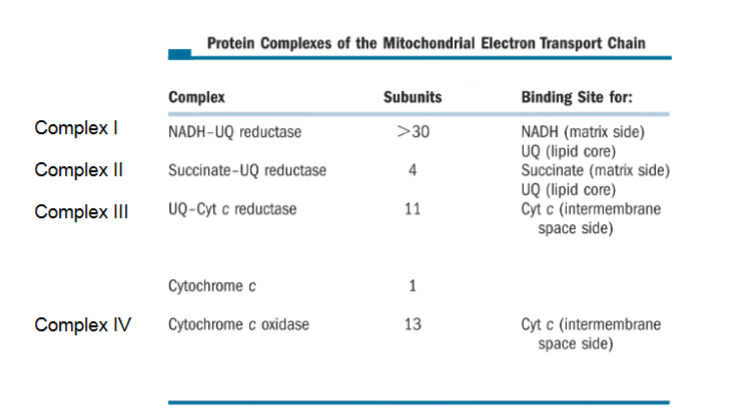
Protein Complexes of the Electron Transport Chain
The protein complexes have more than one name.
For example, Complex I has the name NADH coenzyme Q reductase, and is also known as flavoprotein 1 because it contains the coenzyme flavin mononucleotide (FMN).
Although t has a single enzyme name, it is composed of multiple subunits (>30) and different kinds of subunits.
As another example, Complex II is also known as succinate-coenzyme Q reductase and as flavoprotein 2, because it binds the coenzyme flavin adenine dinucleotide (FAD).
It is composed of 4 different subunits.
FMN (riboflavin phosphate) and FAD (riboflavin ADP) are derivatives of riboflavin (vitamin B2)
F1F0-ATP Synthase
F0 is an integral protein complex
F1 portion (F1 spheres) synthesize ATP. Projects into mitochondrial matrix.
A molecular moving motor at 6000 rev/min (100rev/s)
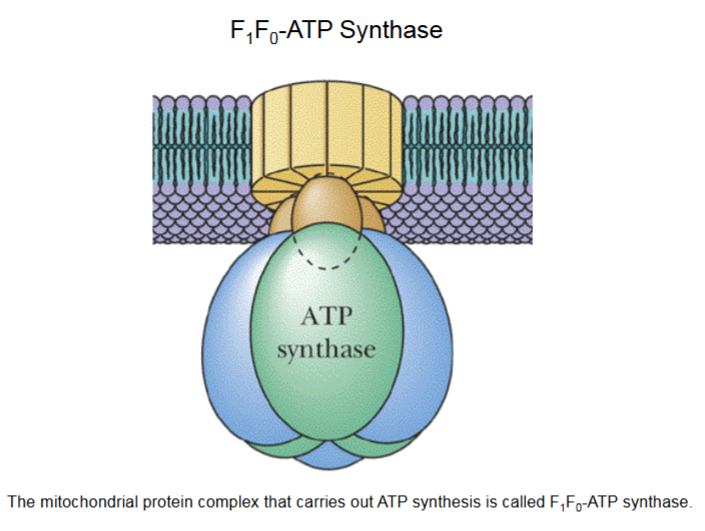
Protein Subunits of ATP Synthase
KEY SUBUNITS
c, γ: Rotate (6000rev/min) stimulate α and β.
α, β: Synthesize ATP
Binding and release of protons by c-subunits drives spinning. Elongated, spinning gamma stalk causes conformational changes to α/β, which allows ADP to bind and become ATP.
a, b, 𝛿, ε are structural subunits that hold the complex together.
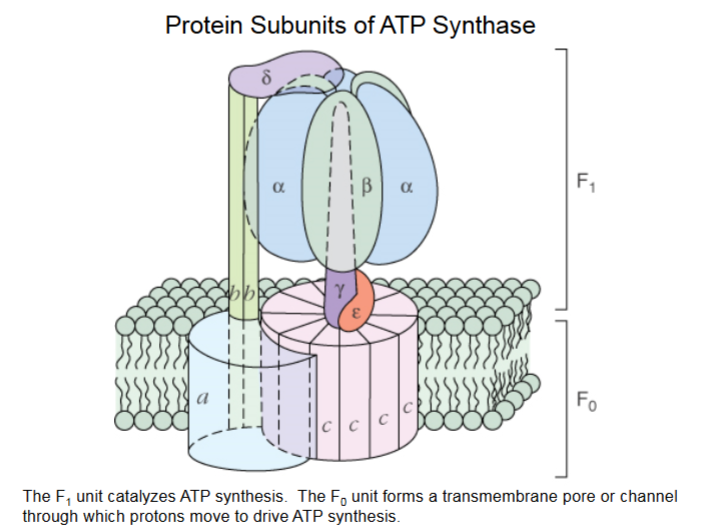
F1F0-ATP Synthase Complex
Synthase enzyme very conserved because energy is always needed, # of c can vary.
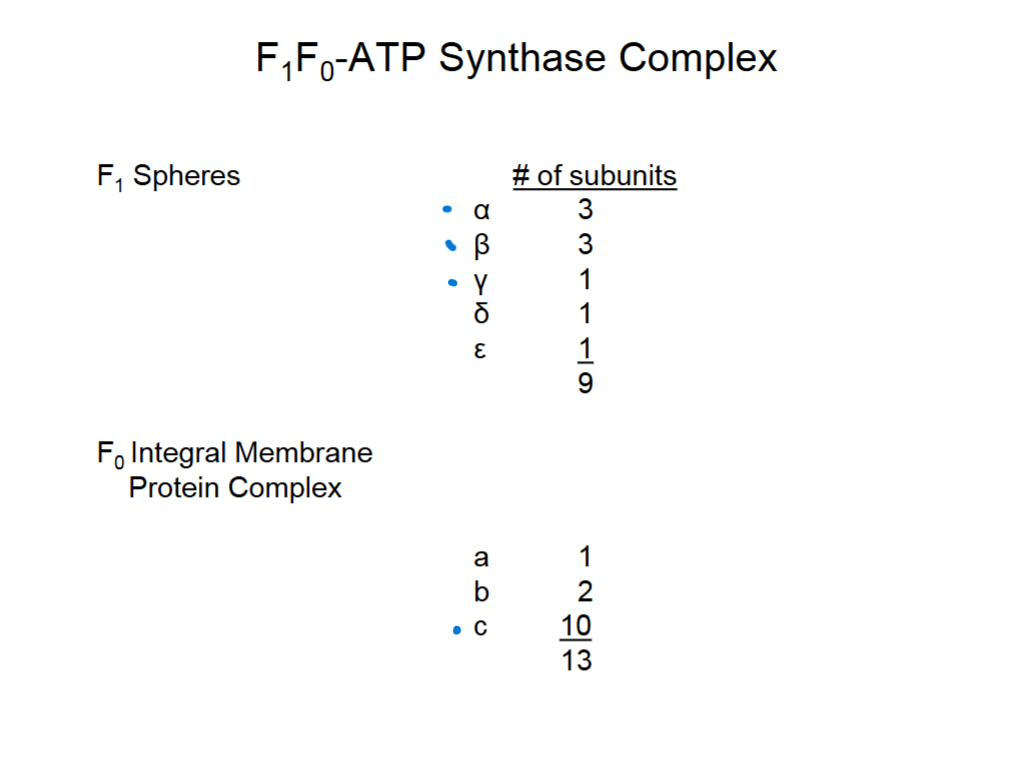
Generation of a Proton Gradient Across the Inner Mitochondrial Membrane
Complexes I, III, IV transport protons across the membrane to build up proton gradient to bind to ATP synthase.
Complex II releases FADH2 protons but they are shuttled to complex III to transport across the membrane.
O2 from lungs used to synthesize H2O in IV, stimulates IV complex.
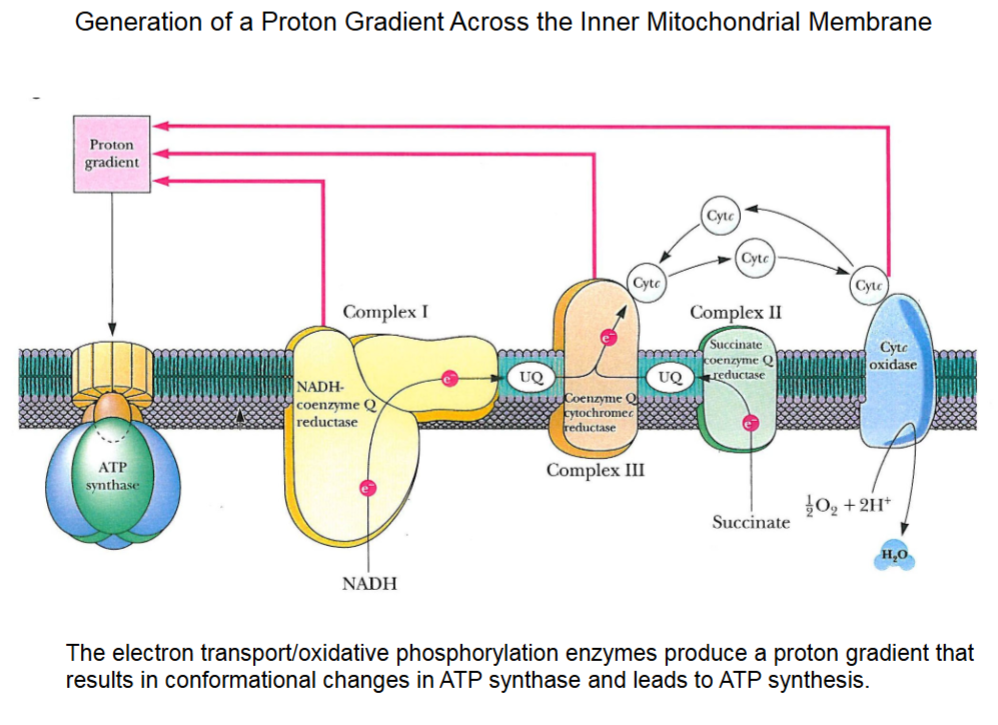
The Malate-Aspartate Shuttle
NADH + H+ gives 2H+ to oxaloacetate to form malate via cytosolic malate dehydrogenase in the cytosol.
NADH + H+ is regenerated in matrix by turning malate into oxaloacetate by removing 2H+ via matrix malate dehydrogenase.
Malate has transport channel into matrix. Oxaloacetate is converted to aspartate to transport out of matrix.
